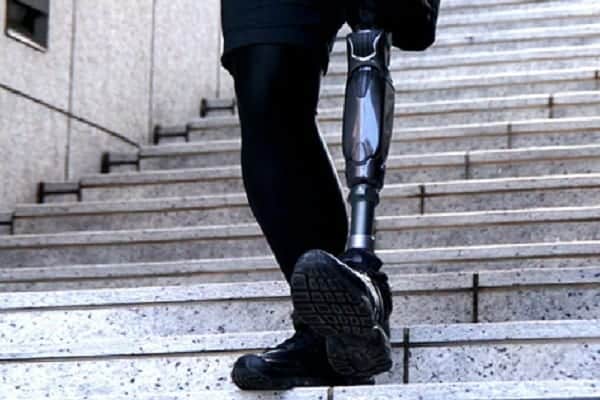The microprocessor knee market is expanding with 13 knees already on the market and more on their way. This is good news for above-the-knee amputees. Support for activity levels now ranges from K1 users seeking improved safety for indoor mobility to active adventurers who want to run, bicycle, and even swim in the ocean.
Microprocessor knee technology has matured significantly in the past few years with near-universal support for:
- adjusted support throughout the Stance Phase of the gait cycle;
- optimized release points, ground clearance, and proper leg extension in the Swing Phase;
- stumble recovery;
- slopes, ramps, and stairs;
- sitting and standing;
- improved energy efficiency.
…all managed by increasingly sophisticated sensors and microprocessors. In short, microprocessor knees have finally reached the point where they can restore lost capabilities to millions of people. The only drawback is that they are still too expensive.
Below, you will find brief descriptions and links to more detailed articles on the top microprocessor knees currently on the market.

V-One Microprocessor Knee from Teh Lin
The V-One Microprocessor Knee combines a 4-bar polycentric design, microprocessor control, and pneumatics to deliver a compelling solution.

Nabtesco/Proteor Allux Knee
Nabtesco’s Allux 2 Knee, distributed by Proteor USA, is a polycentric (4-bar) MPK that controls both the Stance and Swing phases.

Blatchford Orion Knee
As with all of Blatchford’s recent bionic limb updates, the closer you examine the Orion Knee, the more impressive it becomes.

IntelLeg Knee from Reboocon Bionics
The IntelLeg is a new powered bionic knee, meaning that it uses active propulsion to help users perform daily activities.

Freedom Quattro Knee from Proteor
The Freedom Quattro Knee is the first new microprocessor knee in five years and features some important advancements.

Ottobock Genium X3 Knee
The Genium X3 Knee is the most advanced bionic knee on the market. It is also waterproof, dustproof, and highly resistant to corrosion.

Ossur Rheo Knee XC
Ossur’s Rheo Knee XC is the premium version of its sister product, the Rheo Knee. Added features include increased support for higher-level activities.

Ottobock Kenevo Knee
Ottobock’s Kenevo knee is the first bionic knee designed for users with lower mobility grades, meaning those who walk at no more than half-speed.

Ossur Rheo Knee
Ossur’s Rheo Knee is the only bionic knee to use a magnetorheological fluid (MRF) to manage its level of resistance. This makes the Rheo Knee more reactive to movements of the residual limb than its hydraulic competitors.

Ottobock Genium Knee
The Ottobock Genium Knee uses microprocessor technology to help users walk with a more natural gait, improved safety, and reduced energy consumption.

Ottobock C-Leg Bionic Knee
Introduced in 1997, with more than 75,000 fittings worldwide, the C-Leg is a proven bionic knee with excellent stability and dependability. At between $40,000 and $50,000 US for a complete solution, it is in the middle tier of pricing for bionic knees.

Ossur Power Knee
Ossur’s Power Knee is the only bionic knee that attempts to replace lost muscle power with electric power, which helps reduce energy expenditure.

Freedom Plie Knee
The Plie Knee has some unique features that draw both supporters and detractors. With its acquisition by Proteor USA now complete, we are waiting for some indication of its future.
Related Information
For information on bionic feet/ankles, see Current Options for Bionic Feet.
For a complete description of all current lower-limb technologies, devices, and research, see our comprehensive guide.
